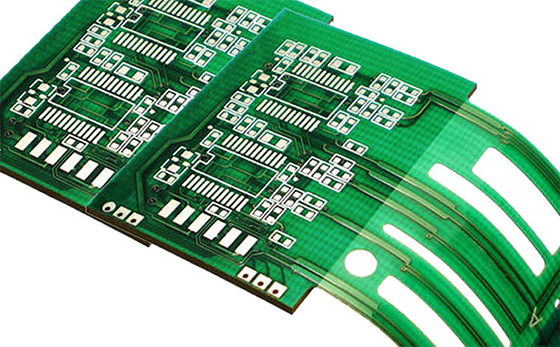Key Applications of Medical Display PCB
The application of medical display PCB in modern medical equipment is very critical, involving image processing, signal transmission, display control and other aspects. Medical displays are used to monitor patient health data, display medical images, and provide real-time feedback, so the performance of PCBs in these systems directly affects the accuracy and stability of the equipment. Below are specific applications of PCBs in medical displays:

1. Display Signal Processing
Medical displays usually require high-resolution and high-precision image display, especially in imaging diagnostic equipment such as CT, MRI or X-ray. In these devices, PCB is responsible for processing data from sensors, converting signals, and connecting displays. For example:
1) Digital Signal Processing (DSP): Medical imaging displays require processing large volumes of high-resolution data. PCBs may integrate specialized DSP modules for image compression, decompression, and real-time processing.
2) Signal Conversion: For example, converting from analog to digital signals or vice versa ensures that the display can accurately reproduce medical images.
2. Display Driver Circuits
Medical displays typically use LCD or OLED screens, which require circuit drivers to display images. Medical display PCBs support these display driver circuits, ensuring accurate transmission of image data to the display for clear image display. Especially in endoscopy systems and patient monitors, the display effect is directly related to the visualization of data and the doctor's diagnostic ability. For example:
1) Backlight Control: For LCD displays, the medical display PCB is responsible for controlling the brightness of the backlight module to ensure that the display is clearly visible under different lighting conditions.
2) Resolution and Response Speed: High-resolution medical displays require fast response and accurate image updates, and medical display PCB designs need to have fast data transmission and signal processing capabilities.
3. Image Optimization and Calibration
In medical imaging equipment, accurate image presentation is crucial, and any slight error may affect the diagnosis result. Medical display PCB can integrate some image optimization circuits, such as Gamma correction circuit and color calibration circuit, to ensure that the image displayed by the monitor matches the actual situation.
4. Power Management
Medical displays often need to operate for extended periods, making the reliability of their power management systems crucial. The medical display PCB is responsible for providing stable power supply, voltage regulation, and overload protection to ensure that the equipment can operate normally in different working environments.
5. Touchscreen and Interactive Features
Many medical displays have integrated touchscreen functionality for interactive operation by doctors and medical staff. Touchscreen PCB design needs to be highly integrated, supporting multi-touch, fast response and precise input. In medical displays, touchscreen panels are usually composed of dedicated PCBs, which are responsible for receiving touch signals and transmitting them to the main control system.
6. EMC and Electromagnetic Interference (EMI) Protection
Medical equipment is particularly sensitive to EMI because its circuits are often affected by other equipment in the hospital environment. Medical display PCBs require strict EMC (electromagnetic compatibility) design to prevent electromagnetic interference from affecting the signal transmission and display of medical displays. For example:
1) EMI Shielding: The metal shielding layer integrated into the medical display PCB design can reduce electromagnetic interference and ensure signal quality.
2) Radiation Protection: To prevent external radiation interference, medical displays may employ special materials and structural designs.
7. Miniaturization and High-Density Integration
Since medical displays usually require compact designs, PCBs usually require high-density integration to save space. Complex circuits need to be completed on a small board, including multi-layer circuits, miniaturized components, high-density wiring, etc. For example:
1) Multi-layer PCBs: To achieve high integration, medical displays often use multi-layer PCBs to support more circuit functions.
2) Miniature Components: Use small size, low power consumption components to ensure that medical display PCB designs are compact and can handle a variety of complex tasks.
8. Thermal Management and Heat Dissipation
Medical displays tend to generate heat over long periods of time, especially in high-performance displays, where overheating may affect the stability of the device. Heat dissipation and thermal management need to be considered in medical display PCB design to avoid device overheating leading to performance degradation or failure.
9. Data Storage and Recording
Some medical displays need to store historical data or image records for doctors' reference. Medical display PCB integrated storage modules, such as Flash memory or SSD, can help realize data storage and transmission, ensuring data security and convenient access.
HoYoGo is an international, professional and reliable medical PCB manufacturer. We have obtained ISO13485 certification. We consistently require our production, engineering, and procurement teams to meet the highest industry standards. We have long-term experience and professional technology knowledge in medical PCBA assembly. If you have any related needs, you are welcome to send us an inquiry.
评论
发表评论